Of all the stations that I’ve visited on my UK travels, none has undergone quite such a colossal transformation as Reading.
Almost all the old structures - including the track layout, depot and signalling - are being swept away in a massive £850 million redevelopment that doubles the capacity of this major junction. It’s a tremendous vote of confidence in the railway’s future.
The first station at Reading was opened on March 30 1840, as the temporary western terminus of the Great Western Railway (GWR). A year later, the line was extended to its intended destination, Bristol. New routes soon spread from the original London to Bristol line, with the line from Reading to Newbury and Hungerford opening in 1847, and the line to Basingstoke in 1848.
In 1844, the four-storey Great Western Hotel was opened on Station Road. It’s reputed to be the oldest surviving railway hotel in the world. After a period as offices, it was re-opened as the Malmaison, a glamorous four-star hotel with its own collection of railway memorabilia and a model railway in the brasserie!
In 1860 the GWR constructed a new station building in Bath Stone, and which incorporated a clock tower. Listed as Grade 2, this is the only original building to survive the current modernisation, although for many years now it has been a popular pub - the Three Guineas.
In 1898 the single-sided station was replaced by a conventional design, with ‘up’, ‘down’ and ‘relief’ platforms joined by a pedestrian subway.
The station was originally named Reading, but became Reading General on September 26 1949 to distinguish it from the ex-South Eastern Railway station nearby.
Nowadays it has reverted to its original name, because from September 6 1965, services from the former Southern station were diverted into a newly constructed eight-car length terminal platform (4A) in the General station. This was less than ideal, so a second terminal platform (4B) was opened in 1975 ready for the start of the service from Reading to Gatwick Airport.
Further changes occurred in 1989, when a new station concourse that featured a shopping arcade named after Brunel opened on the site of the old Southern Railway station. This linked to the platforms by a new footbridge.
On the opposite (North) side a new multi-storey car park was built on the site of the former goods yard and signal works sites, and linked to the same footbridge.
From 1975 until 2013 Reading station had four through-platforms and eight terminal platforms. The limited number of through-platforms and flat junctions east and west of the station, plus the fact that cross-country trains had to reverse direction in the station, made the site a serious bottleneck. Services often had to wait outside the station for a platform to become available.
Because of this, the Government’s 2007 White Paper - Delivering a Sustainable Railway - announced plans to improve traffic flow at Reading.
On September 10 2008 Network Rail unveiled a £400m regeneration and reconfiguration of the station and surrounding track, including a flyunder to the west of the station.
This would allow freight and passenger trains to reach the Berks & Hants and Basingstoke Lines from the ‘slow’ lines without having to cross the ‘fast’ lines on the flat. And because the existing Reading DMU depot was in the way, a new depot was planned on the site of the former West yard.
As well as the track and civils work, five additional platforms would be built and the platforms for Waterloo services lengthened. The Cow Lane Bridge under the railway would be replaced and made two-way, while incorporating a cycle path.
The capacity improvements would allow for at least four extra trains in each direction every hour, and for six extra freight trains each day.
In the end, following the announcement of Crossrail and Reading Council submitting schemes for the station area, the plans grew to encompass £850m of redevelopment.
On March 29 2013 the new transfer deck was opened. The largest element of construction, it’s a 30 metre-wide, 135 metre-long bridge built on the north side of the station before being launched over the tracks.
Designer Grimshaw worked with specialist fabricators to develop a modular canopy system. This has used prefinished, factory-assembled cassette panels with bespoke curved sections, to form the flowing canopy ribbons that give the station its distinctive new look.
On April 2 2013 the new northern through platforms became available, and the subway re-opened as a public right of way from the north to the south of the station (albeit with no access to the platforms). And by April 7 2013 the old footbridge had been completely removed.
Further improvements continue to be delivered, with work continuing to upgrade all of the platforms. Remaining platforms 1-3 and 7-11 are being refurbished, with lengthened platforms to create room for longer trains, new platform canopies, better waiting room facilities, customer toilets and retail outlets.
In the summer the newly lengthened Platform 11 entered into passenger service as Platform 10, and the new Platforms 10 and 11 are on target to fully open (complete with new canopies and upgraded facilities) by February 2014.
A temporary Platform 7 has been built, with Platform 6 closed to help the operation of this temporary platform. The temporary Platform 7 will remain in use while the permanent Platform 7 undergoes phased works before re-opening in spring 2014.
Work on the upgrade of Platforms 8 and 9 is taking place simultaneously. To ensure minimum disruption to passengers, these platforms are remaining in use while the phased upgrade works are carried out. Platforms 8 and 9 are due to complete by late spring 2014, with the entire Station Improvement Project due to be completed by summer 2015.
I visited the station back in August, and couldn’t believe the transformation.
I first got to know the place back in the early 1970s. Since then I’ve been a regular visitor, but when I step off the train from Paddington the scale of the transformation makes me feel like a complete stranger. The only familiar point of reference is the clocktower on the 1860 building, its yellow brick a stark contrast in architectural styles to the brash concrete and grey steel modernity that now surrounds it.
The cramped old footbridge across the station has vanished completely, with the only clue to its existence the surreal sight of a lonely and redundant (but still labelled) door in the side of the multi-storey car park.
Walking along a platform resurfaced with brick, I pause to inspect one of the new waiting rooms - although utilitarian, it is light with easy access, and well supplied with seats.
Eschewing the stairs for the adjacent escalator, I venture up to the new transfer deck, a vast and spacious area compared with its predecessor.
The only interruptions to the space are the lift shafts to each platform. This capacity is mirrored by the main exit, which has four escalators plus flights of stairs of equal width. These lead you down to a new concourse with more than a dozen ticket gates, that let you out onto the redeveloped square outside the 1860s station building.
Walking through this area (which is still a bit of a building site), I re-enter the station via the older 1989 building.
Although much quieter now that its primary role has been lost, the building is still the main retail area and ticket hall for the station. It also serves as the main entrance for the electrified Eastern bays used by both First Great Western services to Gatwick and South West Trains services to Waterloo.
The platforms have been lengthened (and a new one added), resurfaced and fitted with new canopies. The same is not yet true for Platform 4 and the Western bays - although the old canopies have mostly been stripped away, the area is a tangle of old stanchions, temporary ‘Heras’ fencing and new steelwork. But the gain will be worth the pain.
Heading back over the transfer deck, I explore the entirely new Northern entrance to the station, reached by the longest escalators on the site. They feel massive!
At the bottom is a new ticket office that will serve the 30% of passengers who are expected to use this way into the station, saving five to six minutes for travellers from the north of Reading. To facilitate this, a bus terminal and taxi rank has been established right outside the entrance.
It is only when I stroll up to the top deck of the nearby car park, to gaze across the station and Eastern approaches, that the scale of the redevelopment became clear. There is precious little that I recognise, apart from the old clock tower.
The approaches are a sea of fresh ballast, tracks and signals, while the cess is pockmarked with bases for overhead line equipment. If ever there is clear evidence of the level of investment going into our railways, Reading provides it.
Reading is in for further exciting times, as electrification transforms Great Western Main Line services between 2014 and 2016.
The venerable HSTs will (mostly) be replaced by IEPs, and Thames Turbos by refurbished Class 319 EMUs. Although Crossrail is only programmed to run as far as Maidenhead, it can surely only be a matter of time before it’s extended to Reading.
From humble beginnings Reading is fast becoming a jewel in the railway networks crown. I wonder what Brunel, the station’s original creator, would have made of all this?

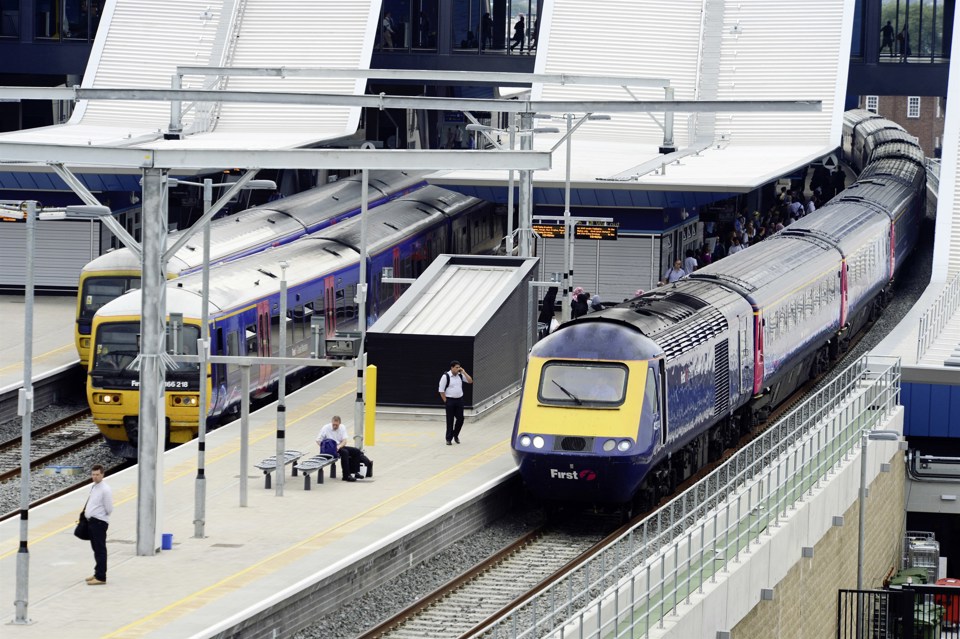
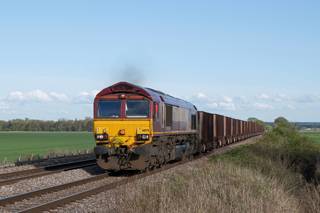
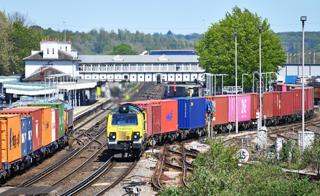
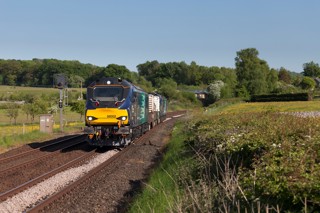
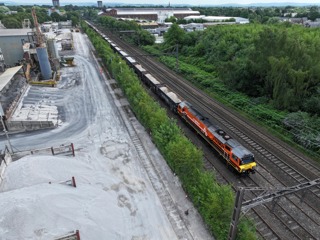










Login to comment
Comments
No comments have been made yet.